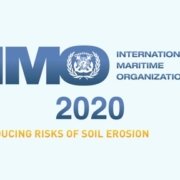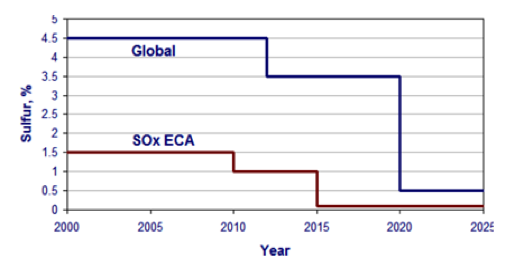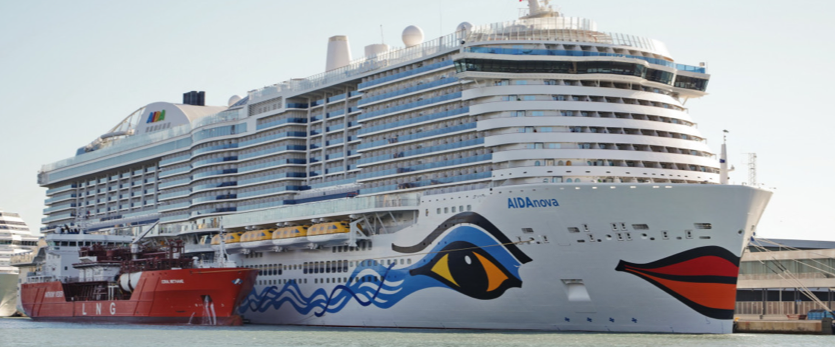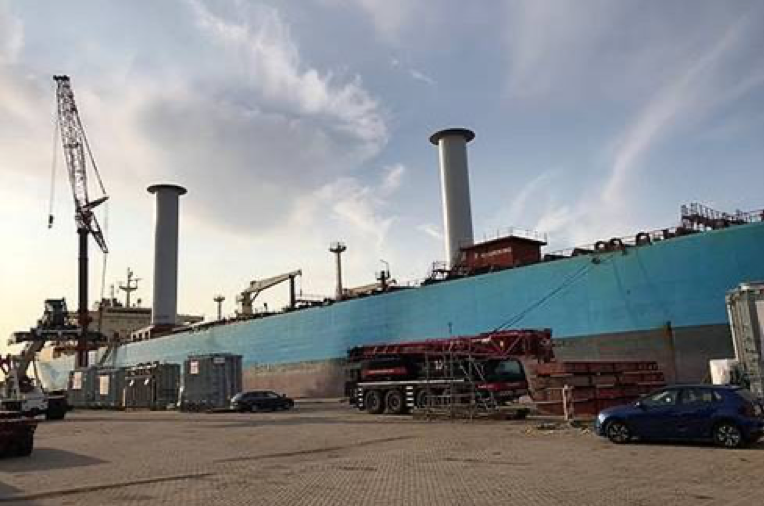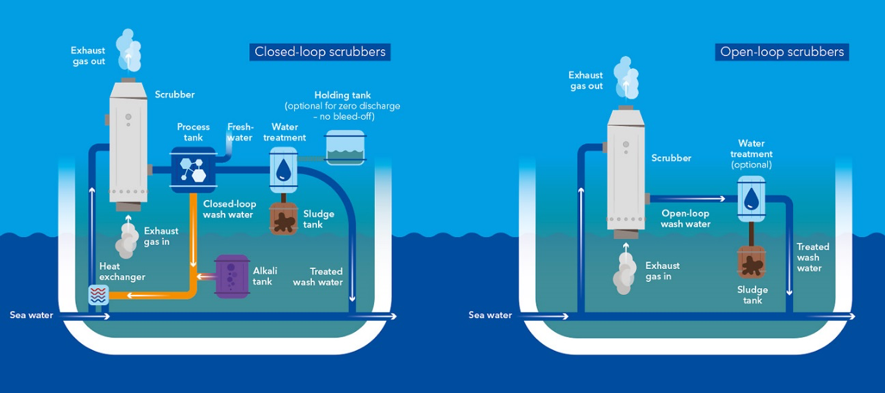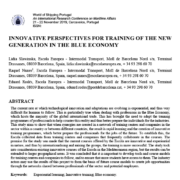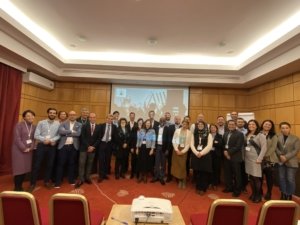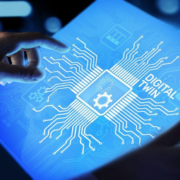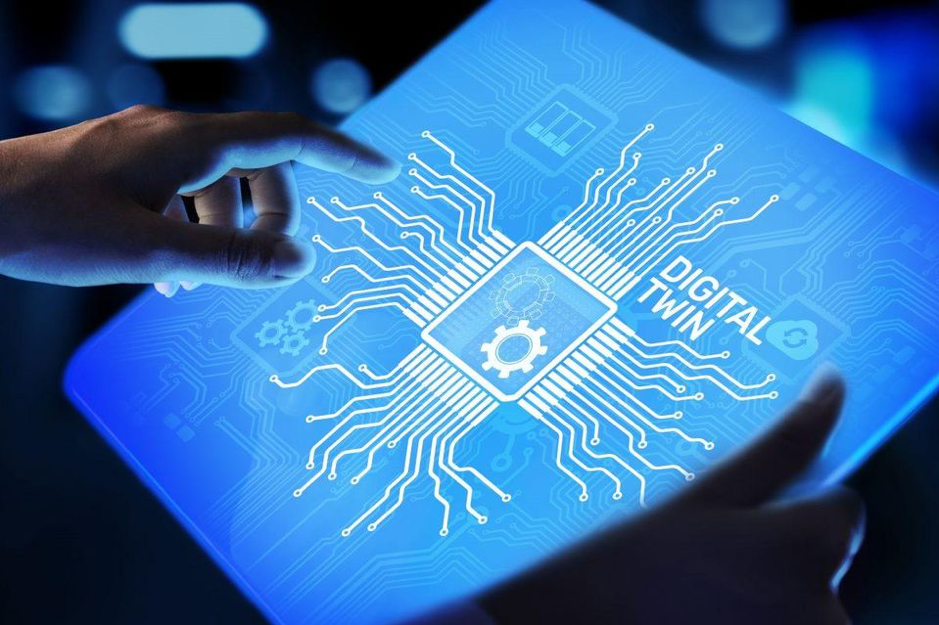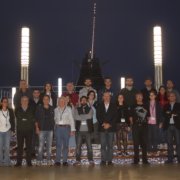As 2020 comes to an end, in this final issue of the Odiseo of 2019 I want to focus on networks and the elements that make them up. There are a few main protagonists: the people they serve and, in many cases, those who benefit from them.
The western Mediterranean is an area composed, in the South, of Mauritania, Morocco, Algeria, Tunisia and Libya. In the North the Sea houses the countries of Portugal, Spain, France, Italy and Malta. It is home to a total of about 290 million people. It has a young South, where 43% of the population is under 25 years old, compared to the 25% in the northern countries. In the North the situation is reversed, where 33% of the people are 55 years old or older. In the south, this number does not reach 15%. The North hosts about 190 million inhabitants facing close to a hundred million in the South.
The three networks that structure the development of our society
Why are we talking about networks? We live immersed in all kinds of networks, and often we are not very aware of them. Our society and economy are built around three major networks: energy, telecommunications and transport. In Europe, these first appeared in the Maastricht Treaty in 1992, and their function was primarily set to link all regions, contribute to the growth of the internal market and job creation, while simultaneously achieving environmental and sustainable development objectives.
These networks serve us efficiently on a daily basis. For transport to function smoothly, we need energy networks, comprising petrol stations, electricity charging points, natural gas supply points and, as well as the currently emerging, new, less polluting energy sources.
Telecommunications allow us to make digital payments by cards, financial transactions, give us access to the World Wide Web, e-commerce, e-mail, IoT and capture data for the use of intelligent transport management systems, among many others.
In transport services, we have two clear examples: the container, which is already widespread through the global network, and is generally accepted and not questioned by the industry members, and on the opposite side of the coin – the railways, which in today’s climate need to make progress to obtain better standardisation systems. This is particularly true in Spain.
Each network has to follow its own operating rules. For example, when we go to a gas station, we know what kind of fuel is there on offer. In the field of electronic communications, the Internet has taken control of the entire market. We have already mentioned the containers in which 20, 40 or 45 feet have become the norm. On the roads, more and more signalling systems and traffic rules are becoming unified. Finally, in road construction itself, international standards are used to classify the different categories.
Building a network

Networks facilitate progress. There are set architectural designs that have been developed to ensure such progress, and which almost always has positive consequences. A network is built with supporting infrastructures. In communication networks, we have service stations and, in some cases, gas pipelines for the transport of fuels or gas. In the field of transport, we have ports, logistics platforms, roads and road and rail infrastructures.
We can then turn to these infrastructures and provide services that support the network. It may involve the simultaneous incorporation of several networks that are necessary to be able to provide the services that the networks have as their main objectives. Finally, operational regulations and a form of governance needs to exist that will establish rules, standards, access and guidelines, among other things that would facilitates their use and growth.
Once an adequate operational structure is established, the network must develop to consolidate. This requires collaboration and information sharing. Best practices, training, and working with specialised groups are important for the take-off and growth of a network. Once a certain size is attained, the network will be able to contribute with more value before becoming a normality. For example, today, it would be very difficult and costly to replace the Internet or the widespread use of maritime containers.
With a consolidated network, new services, new functionalities, transaction optimizations, new challenges and new components emerge.
Transport Networks
 Europe proposed a trans-European network in the same way as Ferrmed[1] proposed a rail network in the Mediterranean. Since then, networks of logistic towing of semi-trailers closely linked to short sea shipping have been proposed. These then help improve freight transport systems and reduce overall costs. When thinking of transport units, these would be our core networks for manufactured products, while for ro-ro transport, RO-RO vessels and ferries are heavily relied on.
Europe proposed a trans-European network in the same way as Ferrmed[1] proposed a rail network in the Mediterranean. Since then, networks of logistic towing of semi-trailers closely linked to short sea shipping have been proposed. These then help improve freight transport systems and reduce overall costs. When thinking of transport units, these would be our core networks for manufactured products, while for ro-ro transport, RO-RO vessels and ferries are heavily relied on.
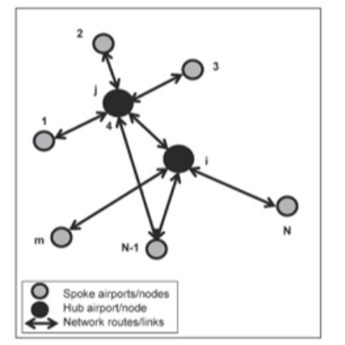 The first element that emerges is the topology of the network. We start from the basic elements that make up networks: nodes and vectors, which in turn form different sets according to the product flows and the criteria with which they are constituted. Taking the airport model as a reference, a modern mode of transport that has evolved very quickly and efficiently, we can see that there are networks with point-to-point relationships that have evolved into networks with hub and spoke nodes that have allowed us to respond to the sizes of the aircrafts. And this, in turn, has evolved into hybrid systems. Thus it can be summed up that the network is configured according to the means of transport, structure and volume of traffic.
The first element that emerges is the topology of the network. We start from the basic elements that make up networks: nodes and vectors, which in turn form different sets according to the product flows and the criteria with which they are constituted. Taking the airport model as a reference, a modern mode of transport that has evolved very quickly and efficiently, we can see that there are networks with point-to-point relationships that have evolved into networks with hub and spoke nodes that have allowed us to respond to the sizes of the aircrafts. And this, in turn, has evolved into hybrid systems. Thus it can be summed up that the network is configured according to the means of transport, structure and volume of traffic.
When looking at the port level in the Mediterranean region, there are clearly defined Hub ports, such as Algeciras and TangerMED. Ports that could be classified as hinterland or Gateways also exist. These include the likes of the Ports of Casablanca, Barcelona, Genoa or Civitavecchia.
 Today, we have a network that is used to set priorities and let me say that I believe that it is above all a question of avoiding arbitrary decisions or decisions that can only be justified for reasons that have nothing to do with the efficiency of transport infrastructure and services.
Today, we have a network that is used to set priorities and let me say that I believe that it is above all a question of avoiding arbitrary decisions or decisions that can only be justified for reasons that have nothing to do with the efficiency of transport infrastructure and services.
A network seeks to develop a competitive and resource-efficient transport system, as indicated in the Commission’s 2011 White Paper on Transport. A network enables the internal market to function properly and strengthens economic, social and territorial cohesion. It facilitates the mobility of people and goods in a simple, safe and sustainable way. It facilitates accessibility and connectivity in all regions that contribute to economic development and competitiveness. And, instead of focusing only on the European region, it is interest to think about the Western Mediterranean per se and to have a good starting point with some of the important criteria for building the networks that are needed today.
TEN-T Network structure
The Trans-European Transport Network has a two-layers structure, comprising a core network and a comprehensive network covering all Member States.
It is a core network that exists without bottlenecks or discontinuities to facilitate interoperability between the different modes of transport.
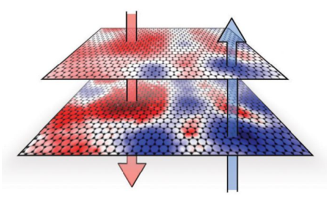
It exists with urban nodes, logistics platforms, freight terminals, ports, rail terminals, airports, and with a maritime dimension with the motorways of the sea. The TEN-T is a network that uses innovative technological solutions, which have a vital role to play in transforming transport to make it accessible to all citizens and to create a safer, more sustainable, low-carbon and energy-efficient system.
The core network corridors cover the most important long-distance flows of the core network and aim, in particular, to improve cross-border links within the Union.
These corridors are multimodal and are open to the inclusion of all modes of transport. They shall cross at least two borders and, if possible, include at least three modes of transport, including the motorways of the sea, where appropriate.
In addition, special attention is paid to the measures necessary to ensure the safety of fuels through increased energy efficiency and promote the use of alternative energy sources and propulsion systems, in particular low-carbon or carbon-free; to reduce the exposure of urban areas to the negative effects of transit transport by rail and road; and to help the removal of administrative and technical barriers, in particular to the interoperability of the trans-European transport network and to competition.
WestMED corridors
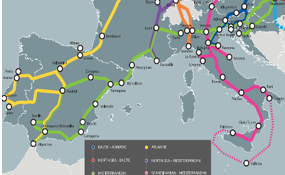 When thinking about the Western Mediterranean, or the WestMED area, the corridors of particular interest to the Escola are:
When thinking about the Western Mediterranean, or the WestMED area, the corridors of particular interest to the Escola are:
- The Baltic-Adriatic Corridor (Poland-Slovakia-Austria-Italy)
- The Atlantic Corridor (Portugal-Spain-France)
- The North Sea – Baltic Sea corridor (Finland – Estonia – Latvia – Lithuania – Poland – Germany – Netherlands – Belgium)
- The North-Mediterranean Sea Corridor (Ireland-United Kingdom- -Bass-Netherlands-Belgium-Luxembourg-South France, because Brexit became Ireland-Belgium-Netherlands and France).
- The Mediterranean corridor (Spain-France- North Italy-Slovenia-Croatia-Hungary)
- Scandinavian-Mediterranean Corridor (Finland-Sweden-Denmark-Germany-Austria-Italy)
The corridor approach can be used as an instrument to coordinate different projects on a transnational basis and synchronise its development, thus maximising the benefits of the network. These projects should contribute to cohesion through better territorial cooperation. In order to ensure effective and efficient implementation of the corridors, each corridor is supported by a European coordinator.
Ports have come to play a fundamental role in structuring the network because they are the main modal exchange points. If we focus on the WestMed area which includes the Atlantic area, the Alboran Sea, the Balearic Sea and the Tyrrhenian Sea, we have 20 main ports in the network. In Portugal Porto, Aveiro, Lisboa and Sines; in Spain Seville, Algeciras, Cartagena, Valencia, Tarragona and Barcelona ; In France Perpignan and Marseille. In Italy, Genoa, La Spezia, Livorno, Civitavecchia – Rome, Naples, Gioia Tauro and Palermo; and in Malta Valetta.
Seaports Infrastructure on the Network
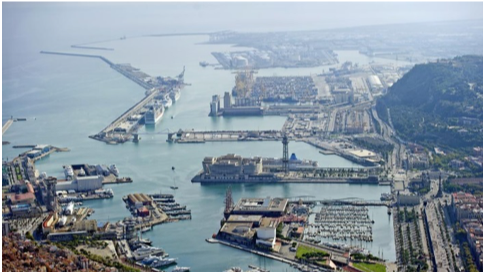
Seaports are the entry and exit points into the land infrastructure of the core network.
Equipment associated with maritime transport infrastructure may include equipment for traffic management and freight transport, for the reduction of negative effects, including negative environmental effects, and for the use of alternative fuels, as well as for dredging, maintenance and security of the port and port access.
Maritime transport infrastructure includes in particular: maritime space, sea lanes, sea ports, including infrastructure necessary for transport operations in the port area, port connections with other modes of the TEN-T network, docks, locks and quays, aids to navigation, port access and canals, jetties, motorways of the sea, related equipment and telematic applications, including electronic maritime services.
Motorways of the Sea
TEN-T policy also focuses on the development of the “Motorways of the Sea” (MoS), for which a European coordinator is responsible for leading the process of its harmonised implementation.
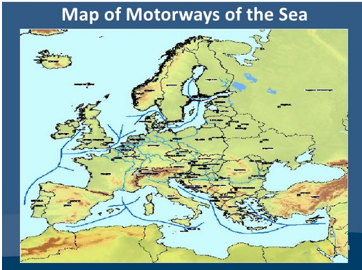 A European maritime space without barriers, which I hope will soon become a Mediterranean space without barriers, includes short sea shipping lanes, ports, associated marine infrastructure, equipment and facilities. It aims to simplify administrative procedures allowing the operation of short sea shipping services between at least two ports, including their hinterland connections.
A European maritime space without barriers, which I hope will soon become a Mediterranean space without barriers, includes short sea shipping lanes, ports, associated marine infrastructure, equipment and facilities. It aims to simplify administrative procedures allowing the operation of short sea shipping services between at least two ports, including their hinterland connections.
MoS include seaports on the core network or between a port on the core network and a port in a third country. This means that today, the port of the third country cannot receive direct funding, but it can benefit from the funding received by the whole operation. It also includes port facilities, freight terminals, logistics platforms and freight platforms located outside the port area, but associated with port operations, information and communication technologies (ICT), security and safety, and administrative and customs procedures in at least one State.
Today, MoS operations also include activities aimed to improve environmental performances of the vessels, ports and hinterland operators, which includes shore-based electricity supply that helps ships reduce their emissions, airworthiness activities throughout the year (dredging), alternative re-fuelling facilities, the optimization of processes and procedures, the human element that would include training, and finally the ICT platforms and information systems, including traffic management systems and electronic reporting systems.
Shipping Lines
Shipping lines are the networks’ champions. Existing or new maritime services that form part of a door-to-door logistics chain, help group freight flows into viable, regular, frequent and high quality short sea shipping links.
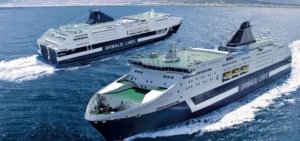 The MoS network can replace a significant part of the expected increase in road transport.
The MoS network can replace a significant part of the expected increase in road transport.
The Lines are now an essential part of the network configuration. They are the real protagonists of the operations. Almost all of them private, and as such they bet their money.
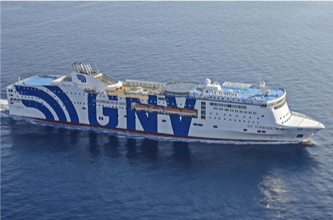 The evolution of the sector will depend to a large extent on this. Infrastructures are indispensable, but they are far from sufficient. The services and quality offered will determine the future. Opportunities for improving exports depend to a large extent on traders and customs. We hope that together we can help them to develop properly.
The evolution of the sector will depend to a large extent on this. Infrastructures are indispensable, but they are far from sufficient. The services and quality offered will determine the future. Opportunities for improving exports depend to a large extent on traders and customs. We hope that together we can help them to develop properly.
Railway connections

The rail part is now one of the main elements of port development. In Barcelona the company VIIA offers rail motorway services. These are new and very powerful concepts. Trucks can now travel on the motorways of the sea to connect with the railways motorways that connect Northern and Central Europe with very short transit time and high-quality services. This represents a new way of understanding intermodality, which is currently undergoing spectacular development. Today, we have significant volumes in the transport of semi-trailers, cars, containers, and refrigerated containers, and in most parts of the continent the rail market in ports continues to grow. This, sadly is not the case in the Spanish rail freight transport market.
Digitization of transport operations
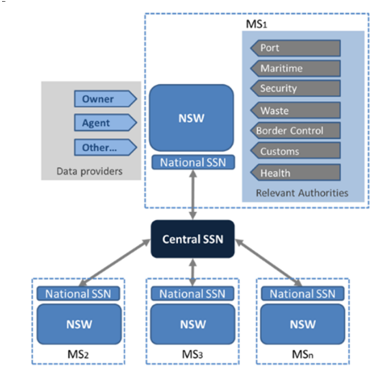 Finally, one of the elements that is of vital importance at this time is the digitization of transport operations. This technological aspect of the networks enables traffic management and information exchanges within and between modes of transport for multimodal transport operations and transport related value-added services, improves safety, environmental performance and simplifies administrative procedures.
Finally, one of the elements that is of vital importance at this time is the digitization of transport operations. This technological aspect of the networks enables traffic management and information exchanges within and between modes of transport for multimodal transport operations and transport related value-added services, improves safety, environmental performance and simplifies administrative procedures.
The digital services should facilitate a seamless connection between the core network infrastructures and regional and local transport infrastructure. An important player is the Port Community System. In Barcelona we have Portic and in Morocco we have PortNET. They will play a fundamental role in the digitization of operations in their respective areas.
The digitization of transport operations is linked to a topical subject in Europe (but one that is increasingly catching on in Morocco, Tunis and Algeria on the other side of the Mediterranean): one of the National Single Windows. I believe that they represent an unique opportunity as customs can take advantage of all the information they receive. If a framework of trust between the public administration of all this countries is possible, then the increase in the speed of operations will be inevitable. I hope they can give us joy in the near future.
The money factor

And I’ll finish with the money. Everything that has been proposed must be funded. Europe has embarked on a path where it relies heavily on sophisticated financing models. These include PPP, participation with bonds, bank financing, subsidies, etc.
One of the sources that provides clarity on this subject in Europe is the information from the European Parliament, which is working on the “Multiannual Financial Framework – LEGISLATIVE TRAIN 11.2019” programme, set to cover the period between 2021 to 2027.
This programme will replace the CEF and aims to develop transport, energy and digital infrastructure within the framework of the trans-European networks. With very significant investment figures, since it is 42.3 billion euros, compared to 23.2 billion for the 2014-2020 period of the EFC. It sets out certain priorities that will have to be analysed: decarbonization, digitization, transition to clean energy and improve digital connectivity.
Conclusions

Finally, we circle back to the beginning, to the transport networks: Trans-European, Trans-Maghreb, Trans-African or international. They will all fight to compete and, in some cases, to cooperate and develop.
Today, we know that the China Belt and the Silk Road initiative could complete a logistics chain from Japan to Russia to Central and Northern Europe. This reconfigures the world again, with transit times of 19 days between Japan and Europe. We are live in exciting times.
I would like to leave you a message, summarizing what was said before:
Networks are a fundamental element for the development of advanced societies; A network is solid if it is easy to use.
Logistics is a networking factor which can help us improve the countries in which we live in.
Let’s do it!

Eduard Rodés
Director
Escola Europea – Intermodal Transport
[1] http://www.ferrmed.com/sites/default/files/2019-04/FERRMED%20GLOBAL%20STUDY%20BOOK.pdf

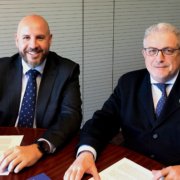
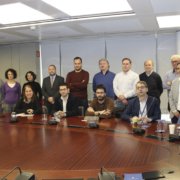


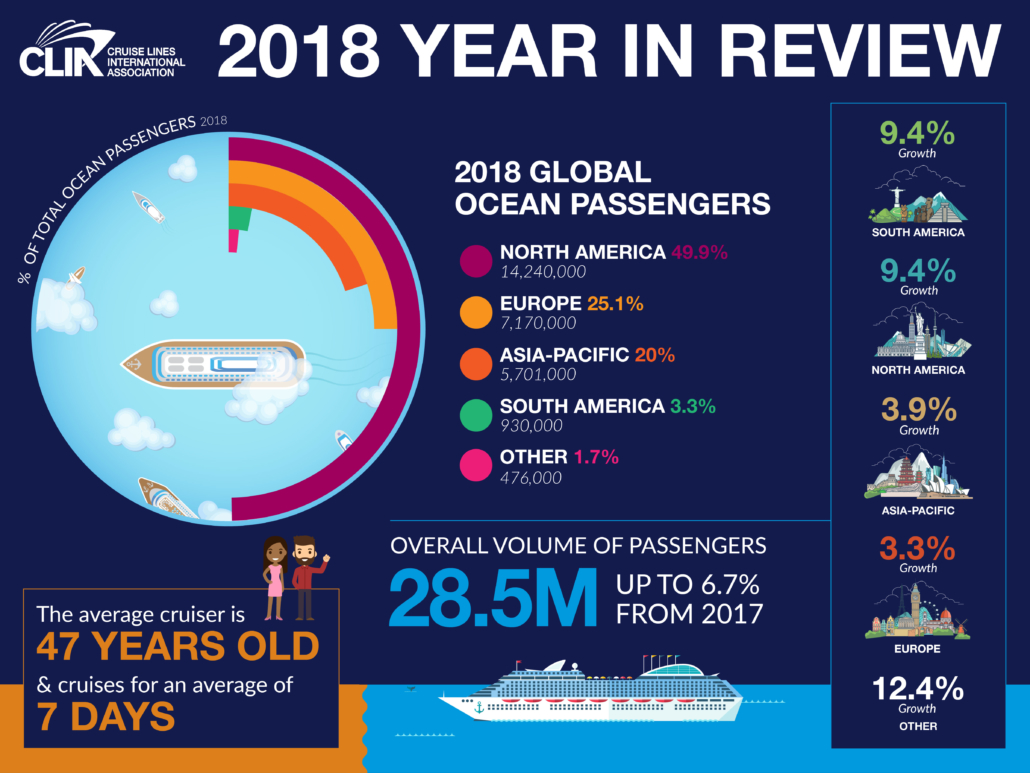
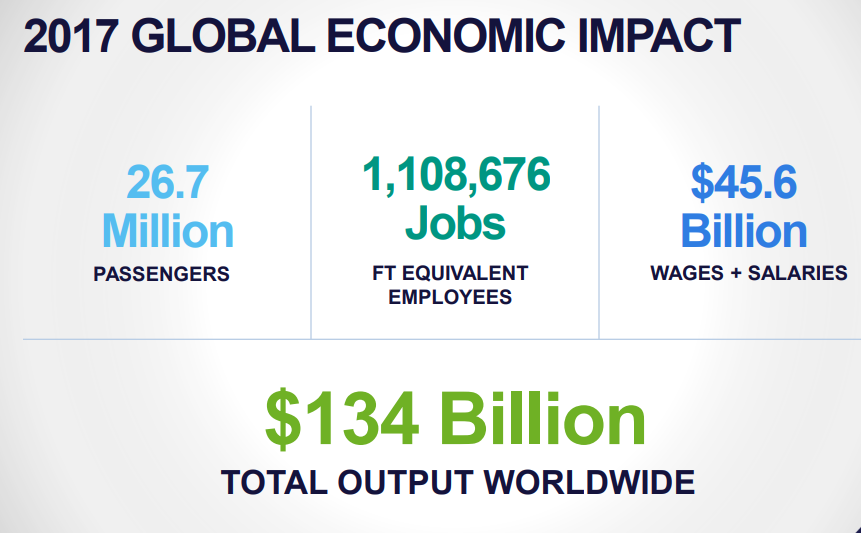
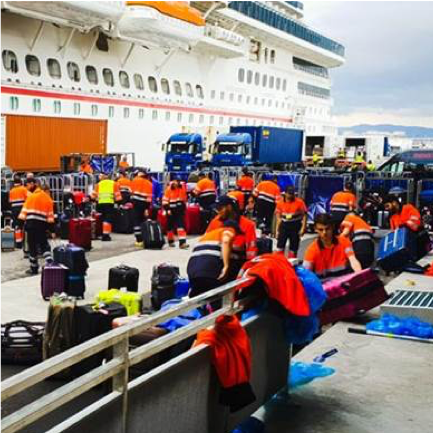
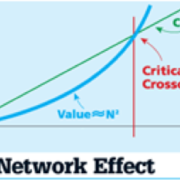

 Europe proposed a trans-European network in the same way as Ferrmed
Europe proposed a trans-European network in the same way as Ferrmed The first element that emerges is the topology of the network. We start from the basic elements that make up networks: nodes and vectors, which in turn form different sets according to the product flows and the criteria with which they are constituted. Taking the airport model as a reference, a modern mode of transport that has evolved very quickly and efficiently, we can see that there are networks with point-to-point relationships that have evolved into networks with hub and spoke nodes that have allowed us to respond to the sizes of the aircrafts. And this, in turn, has evolved into hybrid systems. Thus it can be summed up that the network is configured according to the means of transport, structure and volume of traffic.
The first element that emerges is the topology of the network. We start from the basic elements that make up networks: nodes and vectors, which in turn form different sets according to the product flows and the criteria with which they are constituted. Taking the airport model as a reference, a modern mode of transport that has evolved very quickly and efficiently, we can see that there are networks with point-to-point relationships that have evolved into networks with hub and spoke nodes that have allowed us to respond to the sizes of the aircrafts. And this, in turn, has evolved into hybrid systems. Thus it can be summed up that the network is configured according to the means of transport, structure and volume of traffic. Today, we have a network that is used to set priorities and let me say that I believe that it is above all a question of avoiding arbitrary decisions or decisions that can only be justified for reasons that have nothing to do with the efficiency of transport infrastructure and services.
Today, we have a network that is used to set priorities and let me say that I believe that it is above all a question of avoiding arbitrary decisions or decisions that can only be justified for reasons that have nothing to do with the efficiency of transport infrastructure and services.
 When thinking about the Western Mediterranean, or the WestMED area, the corridors of particular interest to the Escola are:
When thinking about the Western Mediterranean, or the WestMED area, the corridors of particular interest to the Escola are:
 A European maritime space without barriers, which I hope will soon become a Mediterranean space without barriers, includes short sea shipping lanes, ports, associated marine infrastructure, equipment and facilities. It aims to simplify administrative procedures allowing the operation of short sea shipping services between at least two ports, including their hinterland connections.
A European maritime space without barriers, which I hope will soon become a Mediterranean space without barriers, includes short sea shipping lanes, ports, associated marine infrastructure, equipment and facilities. It aims to simplify administrative procedures allowing the operation of short sea shipping services between at least two ports, including their hinterland connections. The MoS network can replace a significant part of the expected increase in road transport.
The MoS network can replace a significant part of the expected increase in road transport. The evolution of the sector will depend to a large extent on this. Infrastructures are indispensable, but they are far from sufficient. The services and quality offered will determine the future. Opportunities for improving exports depend to a large extent on traders and customs. We hope that together we can help them to develop properly.
The evolution of the sector will depend to a large extent on this. Infrastructures are indispensable, but they are far from sufficient. The services and quality offered will determine the future. Opportunities for improving exports depend to a large extent on traders and customs. We hope that together we can help them to develop properly.
 Finally, one of the elements that is of vital importance at this time is the digitization of transport operations. This technological aspect of the networks enables traffic management and information exchanges within and between modes of transport for multimodal transport operations and transport related value-added services, improves safety, environmental performance and simplifies administrative procedures.
Finally, one of the elements that is of vital importance at this time is the digitization of transport operations. This technological aspect of the networks enables traffic management and information exchanges within and between modes of transport for multimodal transport operations and transport related value-added services, improves safety, environmental performance and simplifies administrative procedures.


